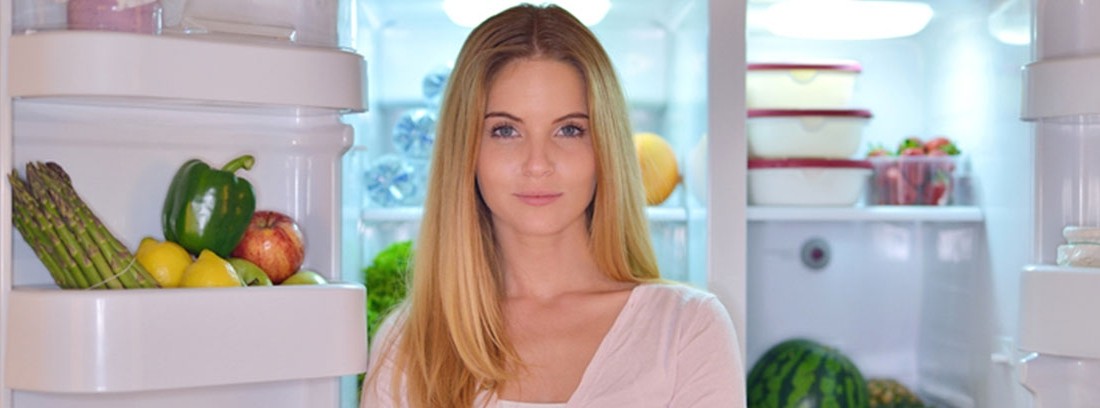How to preserve food

No less important is the cooking of food and its subsequent storage, which must follow rules to avoid, as far as possible, any contamination. To preserve food, contact between raw and cooked food should be avoided: a cooked food can become contaminated by contact with raw food.
Preserving food, cooking and handling
Hands should be properly washed and rinsed with warm soapy water before and after handling any food. This is imperative after going to the bathroom or changing the baby's diapers.
- It is advisable to use cooking gloves if you have any wound or cut on the skin and to wear the wound properly protected.
- As food is easily contaminated, it should be perfectly maintained clean all surfaces used to prepare them.
- Pure water is just as important for preparing food as it is for drinking. If the water supply does not inspire sanitary confidence, the water should be boiled before adding it to food or turning it into ice to refresh beverages. This is especially important with the water used to prepare food of infants.
- When buying food, it must be taken into account that it may be contaminated if the transport or handling at the point of sale has not been adequate. Do not buy or eat foods in which the packaging is damaged or expired, bulky or odd-colored cans.
- Both meat and fish purchased should be refrigerated as soon as you get home and kept in the refrigerator until ready to use.
- The frozen food (meat, fish and chicken) should be completely thawed before cooking. Avoid doing it at room temperature, it is better to transfer it directly from the freezer to the refrigerator for a day or two or to use the microwave.
Those that are consumed raw, such as fruits and vegetables, must be washed very well with clean water. Vinegar is very useful for washing vegetables by soaking them for at least half an hour.
Proper cooking of food
The foods that can be more easily contaminated are red meat and poultry, eggs, cheeses, dairy products (and derivatives such as creams), raw vegetables and raw fish or seafood. Proper cooking of food can eliminate any possible pathogens. When cooking food, it must be taken into account that the applied temperature must reach at least 70ºC throughout the entire mass of the food.
Each food requires a suitable temperature for cooking:
Eggs, for example, should be cooked until the white and yolk are hard. Especially during the summer It is advisable to avoid foods that contain raw eggs, such as mayonnaise or creams, as they may be contaminated with a bacteria called Salmonella. Commercial products of this type are made with pasteurized eggs so there is no risk of salmonellosis.
- Fish should be dull in color when cooked and the scales should come out easily. Both these and the shellfish must be perfectly cooked. It is recommended that they have an internal temperature of at least 63ºC for 15 seconds. The fish is done when the thickest part becomes opaque and falls apart easily when pierced with a fork.
- The red meat and poultry they must reach an internal temperature between 70º and 82ºC, respectively. If possible, a thermometer can be used to make sure the meat is cooked through. It is inserted from 2.5 to 5 cm in the center of the food to be cooked and it is waited 30 seconds to read it. Chicken meat should not be eaten if it is pink inside.
- In case of storing already cooked food, it should be done in clean and airtight containers and avoid mixing and coming into contact with raw food. A common mistake is placing an excessive amount of hot food in the refrigerator. In a crowded refrigerator, cooked food cannot cool inside as quickly as desired. If the central part of the food is still hot (more than 10 ° C) for too long, the microbes they proliferate and rapidly reach a concentration likely to cause disease.
- Cooked food should not be left at room temperature for long; that is, you should not wait more than two hours. If you have a cookout, be sure to serve on ice pans if they are cold, or on hot water trays if they are hot.
- Lastly, the leftover food should ideally be eaten within 3 days. Before eating it, it must be heated well. Also in this case, a good reheating implies that all the parts of the food reach at least a temperature of 70º C.
Remember that…
When it comes to taking care of the health of your whole family, you should follow these tips to preserve food, but it is also advisable to hire one that offers you a wide range of assistance. You can hire those that you think are most important or necessary for all members of your household.
(Updated at Apr 13 / 2024)